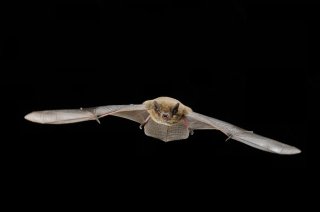
Impact story
Solutions for bat mortality due to wind farms
The government is looking for new knowledge and innovations with which bat mortality by wind farms can be minimised, without major consequences for wind energy operations. Wageningen University & Research investigates the migration and behavior of bats around wind farms, so that the correct mitigating measures can be taken.
Wind turbines can cause many bat victims. Turbines on land mainly cause death among local populations. In the coastal zone, on the high seas and along large lakes and rivers, the blades of windmills pose a danger to migrating bats.
In recent years, we have provided more than 150 bats with a transmitter so that we can follow their flight movements.
Map of flight routes
To prevent impact on bats, it is crucial to take flight routes and foraging areas into account when choosing wind farm locations. Researcher Sander Lagerveld maps these out and continues to work on computer models based on, among other things, weather parameters to predict bat migration as precisely as possible. This information can be used to temporarily stop wind turbines at the right times.
Bat detectors
Wageningen University & Research has a lot of experience in the field of bat detector research. Bat detectors are used for long-term monitoring of the presence in space and time of bats and to determine the species composition. We currently have an operational bat-detector network of fifteen locations on the North Sea.
Telemetry
Telemetry is used to determine flight paths and habitat use of bats. In recent years we have provided more than 150 bats with a transmitter, so that we can follow their flight movements with our own network of around twenty stationary telemetry stations. This network is part of the international Motus Wildlife Tracking System (www.motus.org).
Thermal imaging cameras
Finally, we use thermal imaging cameras that provide detailed information about flight behavior, for example around wind turbines.
- Unfortunately, your cookie settings do not allow videos to be displayed. - check your settings
In our bat research, we work closely with the wind energy sector, nature organisations, ecological consultancy firms and the government.